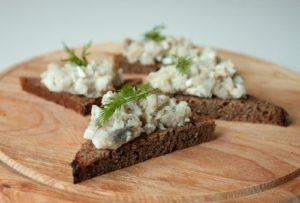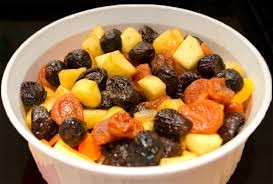When it comes to food, Jewish culture is one of the most noteworthy. Jewish people know the ropes and their cuisine is unique and outstanding. It is actually a mix of different styles combined into one, which has become a divine combination where Eastern European, Middle Eastern, German, Mediterranean and Spanish interwoven. It is truly an explosive mixture of sorts. Just take the Forshmak alone. This is mashed potatoes with hashed meat or herring (?!). Surely, many of us might find this rather odd but once again, the imagination of the cooking person especially a person of another culture, nationality, mentality or race has no boundaries and may lead you to where your mind and taste sensors may “explode” of pleasure.

Now, let us see more detailed how to actually cook Forshmak. What you need are the following ingredients: fillets of herring apparently (4 pieces), put them into cold water to soak during 12 hours; an onion, chopped finely (2 tablespoons); same finely chopped tart apple (5 cups); chopped finely hard boiled eggs (2); trimmed white bread (2 slices); cider vinegar (3 tablespoons); salad oil (2 tablespoons); sugar (1 teaspoon). Cooking the herring, change the water your hearing soaks two times the least, then drain. Chop it finely just like the rest of the ingredients. Combine with the rest of the chopped ingredients, which are eggs, onion and apple. Take vinegar, oil and sugar and beat them up. Those two slices of white bread were to be soaked as well after which add it to the herring and chop finely until it becomes a smooth mixture. Do not forget about seasoning and then chill. It is served cold on the lettuce leaves like a fish dish. This is an appetizer.

Tzimmes is another dish, among many others, worth of mentioning. This is a dessert actually. A stew but sweet stew. It sounds inviting and engaging, does not it? Okay, what you need to make it are the following ingredients: carrots, prunes and/or sweet or white potatoes. You may also make it out of boiled pineapple chunks so there would be a pineapple juice out of it. A stewing beef is optional.
A bit of a history: normally, this this is served on Rosh Hashanah, which is an equivalent of New Year because it is sweet and is a symbol of nice good sweet New Year ahead and on Passover marking the harvest season to begin.
Back on track: take a can of pineapple in its juice, if you decide on making it with a pineapple, peel three large carrots and cut them into big slices, add some more pineapple juice or water if you feel like it is needed to be added. Take a large saucepan, put pineapple and carrots into its juice and cook on a slow fire. Cook it this way for about 30 minutes until the carrots become soft absorbing the juice. In case the level of the juice becomes too low, pour in some more. If not – some more water.
If cooking with the stewing beef, take one lb of it cutting into chunks; sugar (1/2 cup), water (1 cup), sweet potatoes (3), and/or white potatoes (3), carrots (5). Cook the stewing beef in the saucepan in the oil, add the sugar and water bringing it to a boil, then make the fire smaller cooking on a slow one. Take potatoes and carrots. Peel them. Then dice them. Add to the saucepan. Let it be stewing for about an hour or so pouring in some more water now and then. Make sure there is water all the time but avoid making it soggy. When the potatoes become soft, take the lid off just so the water remaining boiled off. Mash the potatoes so it was mashed potatoes and put it into a casserole dish to bake for another half an hour. In case you do not like or cannot eat sugar, replace it with raisins or prunes.
Bete’avon!
(which means “enjoy your meal” in Hebrew)
About the author:
Check My Essay Paper Editing Company is the address of the blog by well-known writer and blogger, Melisa Marzett. She showed herself to good advantage with her writing and her works are recommended to read for inquisitive minds. Enjoy!

